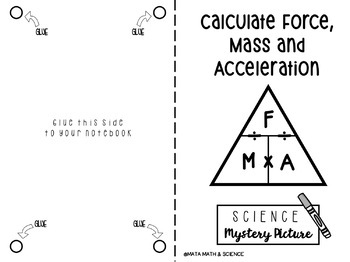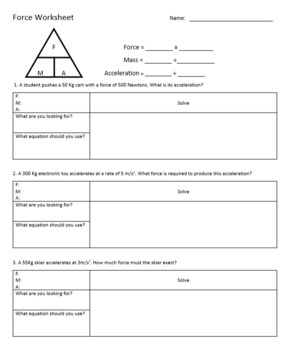

What if Britney’s cart is full to the top while Lisa has only a few items in her cart? Who will be able to move faster now? Now, what if the masses of their carts are different. This means that the force and acceleration are somehow related.

If Britney is more powerful, will she be able to move the cart faster, with more acceleration? Yes! In daily life, we see numerous examples that tell us that there exists a strong relationship between mass, force, and acceleration.įor instance, take the example of two women, namely Lisa and Britney, pushing shopping carts in the mall. Relation between force, mass, and acceleration: Now that you know the definition of mass, force, acceleration, it is time that we move to the actual topic of the article. The unit of acceleration is ms-2 and it has the same direction as the force.ĭo you know? Velocity and acceleration can be opposite in direction like in the case of a ball thrown upward. If it is positive it is called acceleration and if it is negative it is called retardation or deceleration. “ Acceleration is a vector quantity that is defined as the rate at which an object changes its velocity.”Īcceleration is derived from velocity so it is also a vector quantity. Read more on the force in the post “Force Definition, Units, Types, Formula, and Applications.” Definition of acceleration: Acceleration is defined as: Before digging into those details, it is better we revise what acceleration is. The formula of force will be discussed later in the article.

Its unit is Newton, which is equal to a force that moves the body of 1 kilogram with an acceleration of 1 meter per second square. It has different types i.e applied, friction, magnetic e.t.c.įorce has direction in addition to a magnitude which makes it a vector quantity. Definition of Force:įorce is a quantity that causes a change in the state or form of the body. According to NASA, it is possible for a black hole to be of the size of an atom and have the mass of a mountain. Mass does not depend on the size of the body. There are some other units that are used to calculate mass such as pounds, tons e.t.c This equation also removes the common misunderstanding that mass and weight are the same quantities. Where w is weight and g is the gravitational force. Mass is a scalar quantity and has magnitude only. What is mass, force, and acceleration? Definition of mass: In this post, we will first discuss mass, force, and acceleration and after that, we will see how they are interrelated by one of Newton's laws. Learn the answers to these and many more of your questions in the blog post below. that object's mass, depending on the materials out of which it is made - magnitude is inversely proportional to the object's mass.Do you have to consider the mass of the object while applying force on it? Does acceleration affect force?.the net balance of all external forces acting onto that object - magnitude is directly proportional to this net resulting force.The magnitude of an object's acceleration, as described by Newton's Second Law, is the combined effect of two causes: The orientation of an object's acceleration is given by the orientation of the net force acting on that object. Accelerations are vector quantities (in that they have magnitude and direction). In mechanics, acceleration is the rate of change of the velocity of an object with respect to time.


 0 kommentar(er)
0 kommentar(er)
